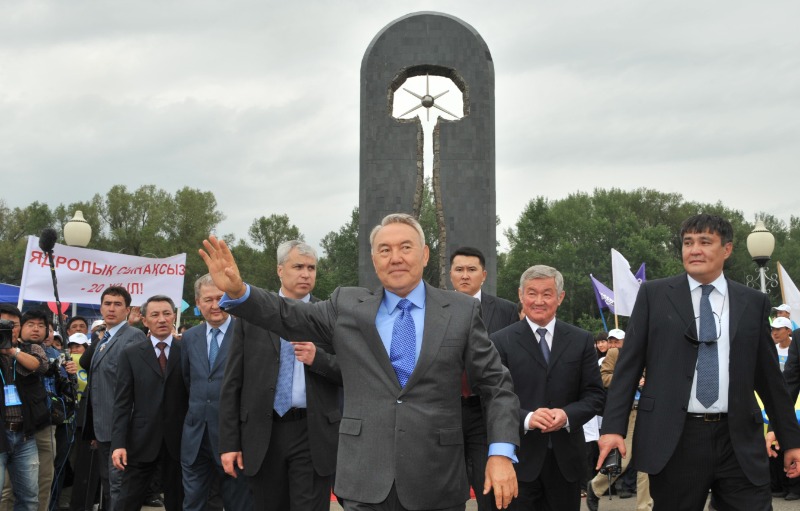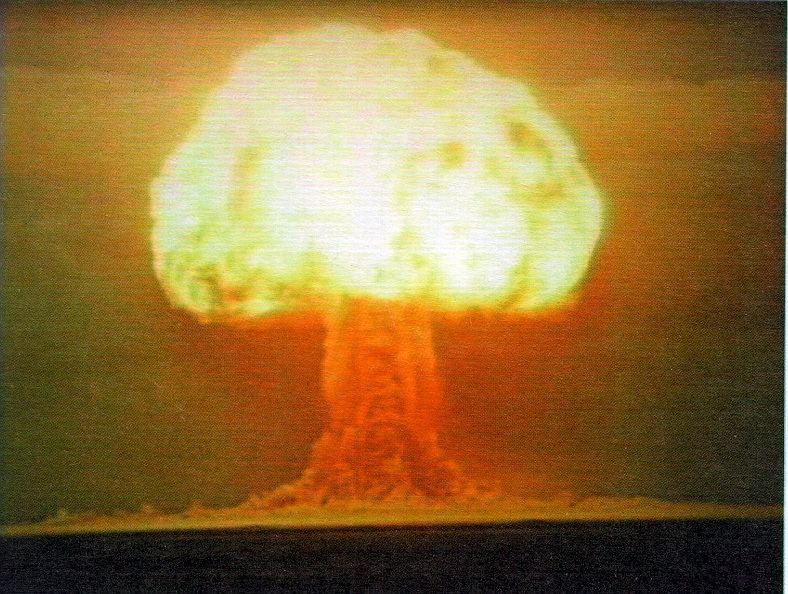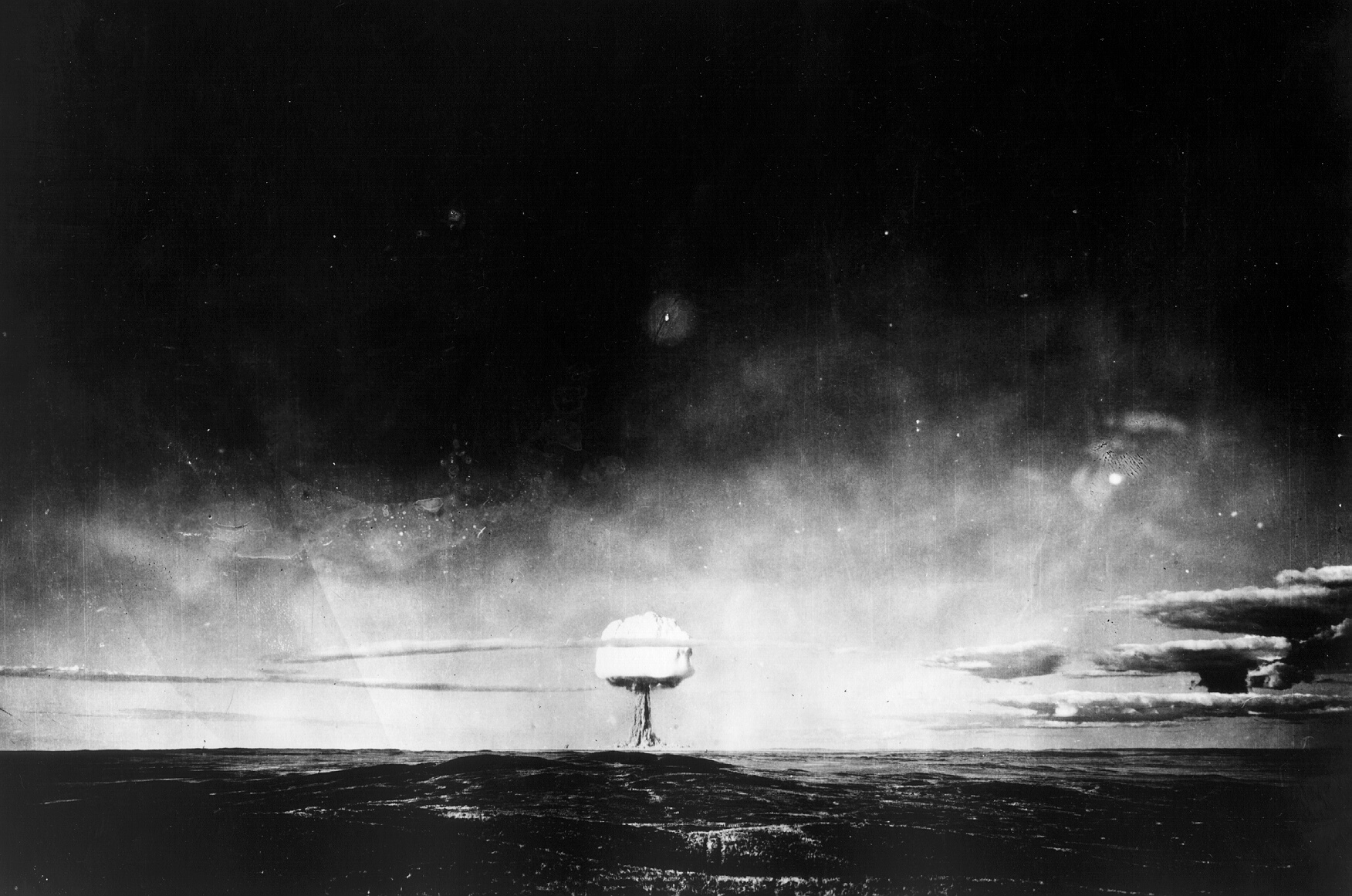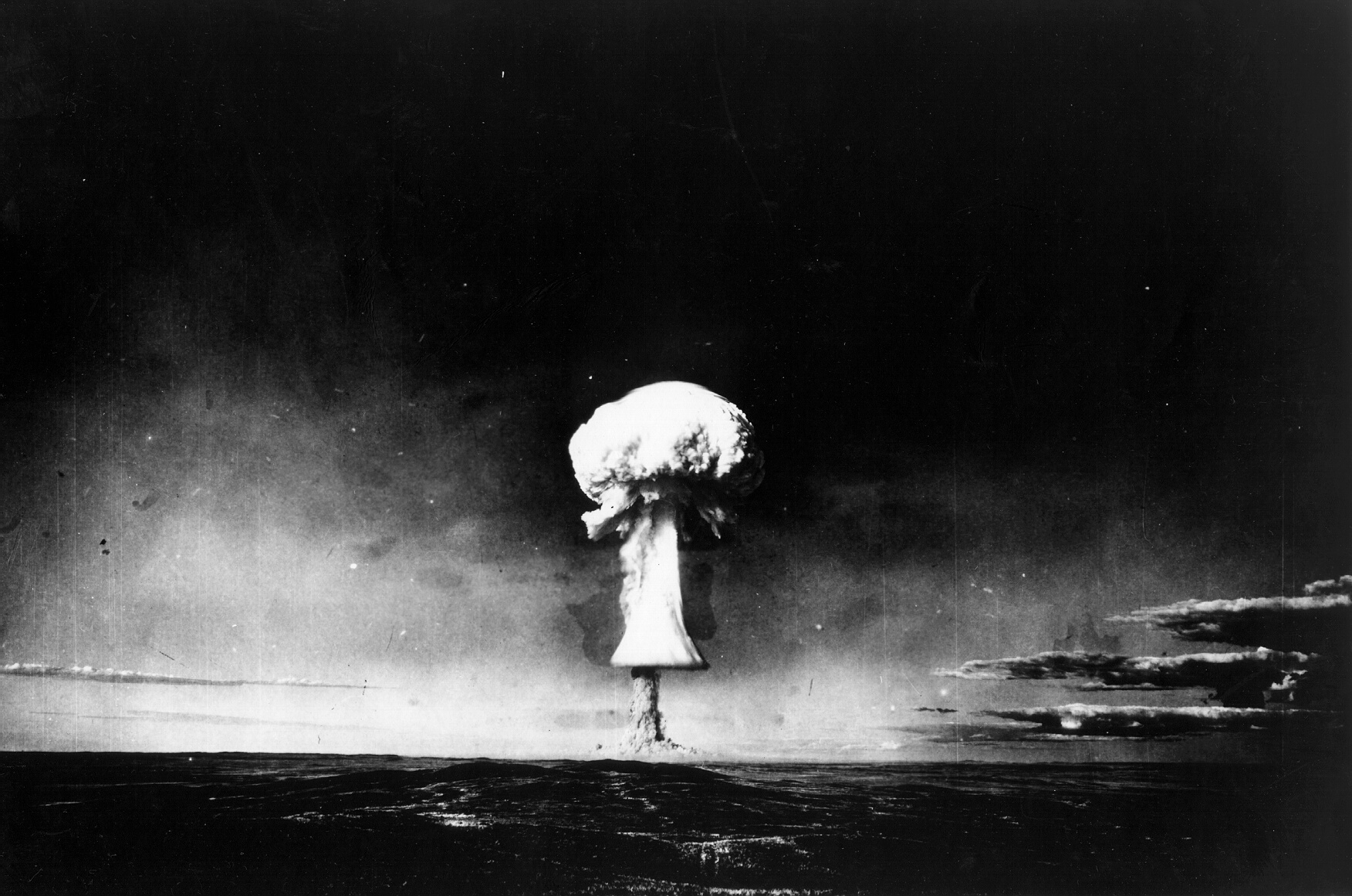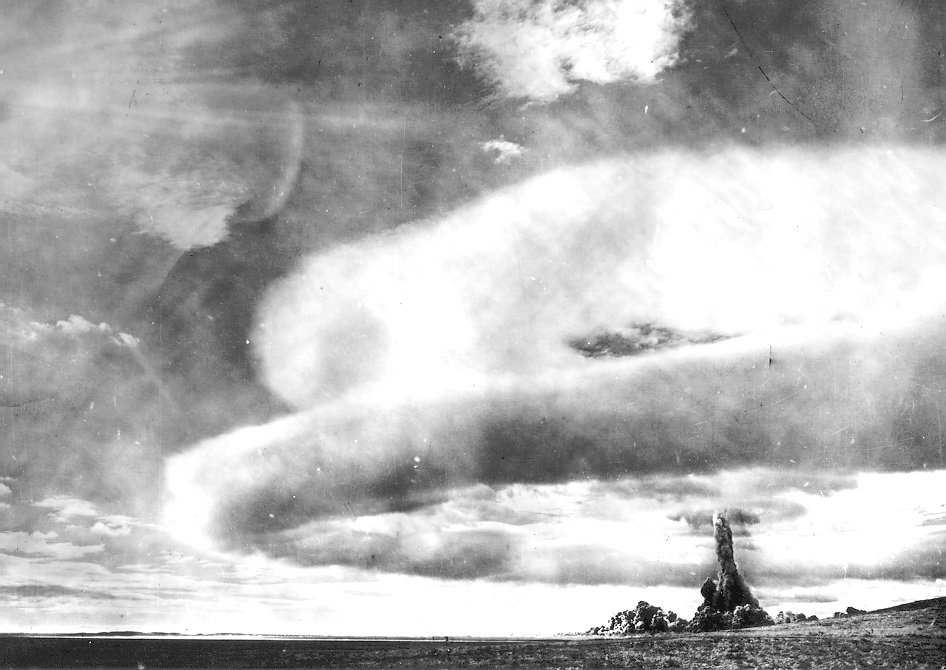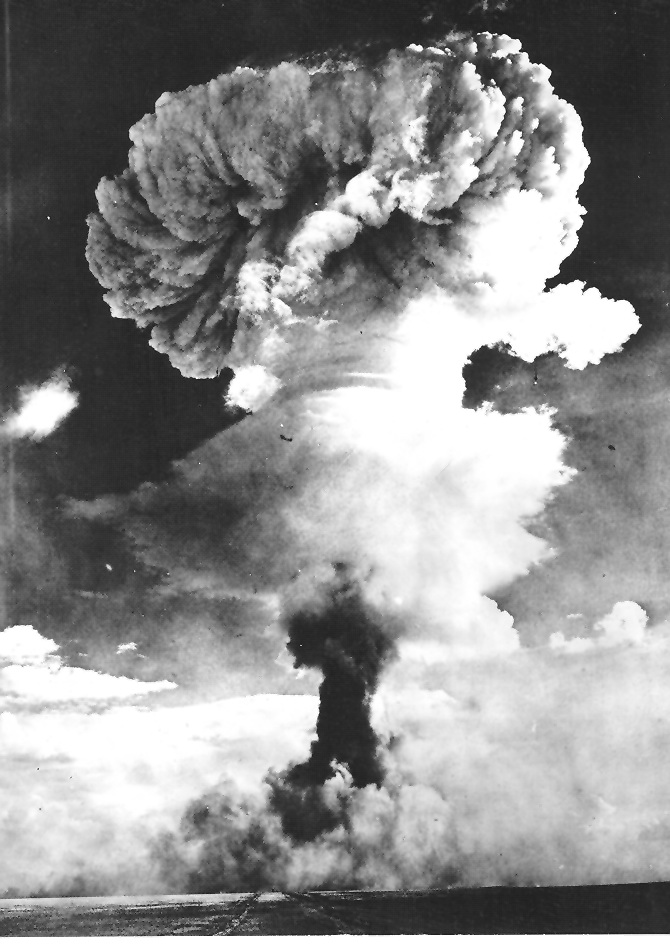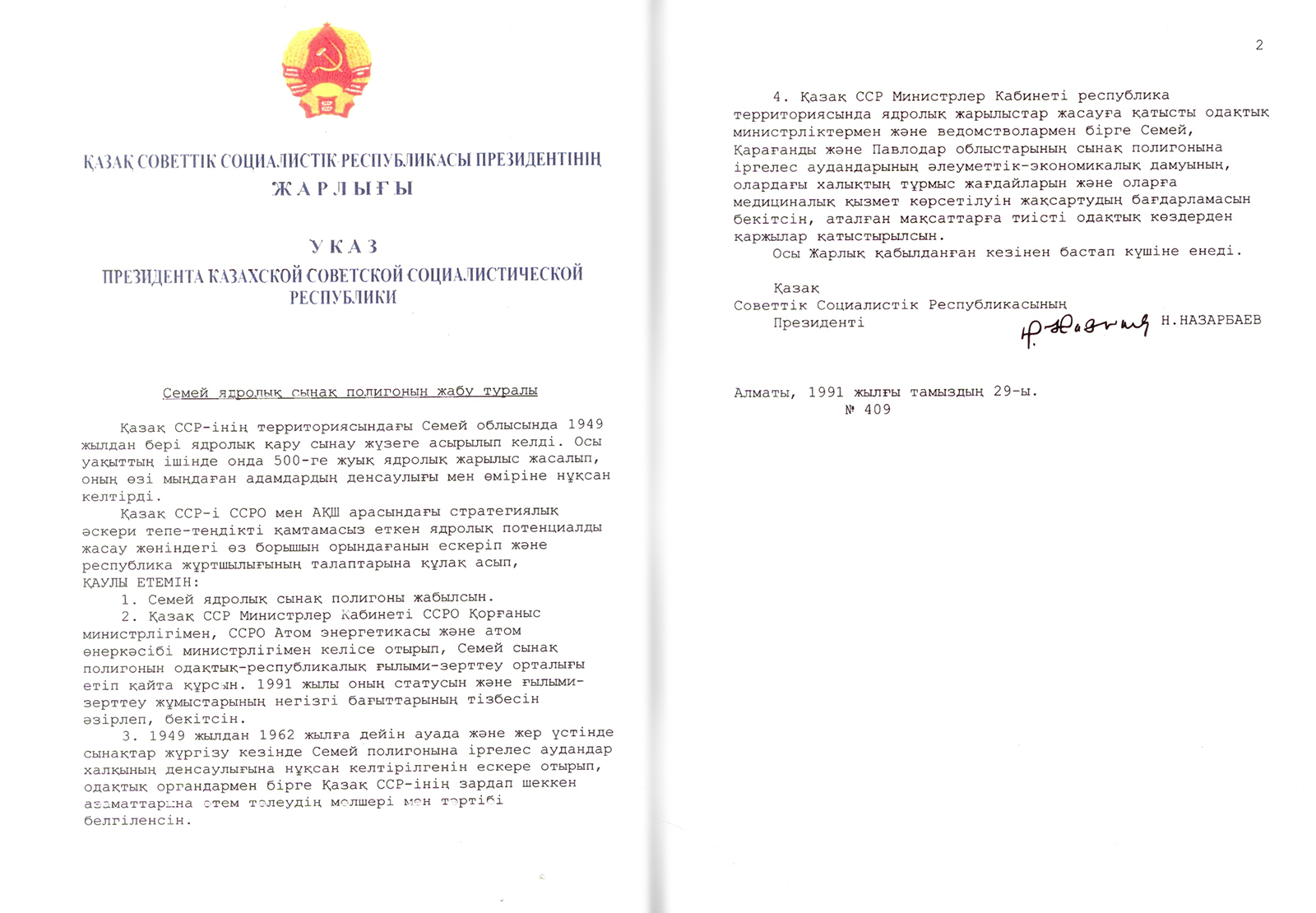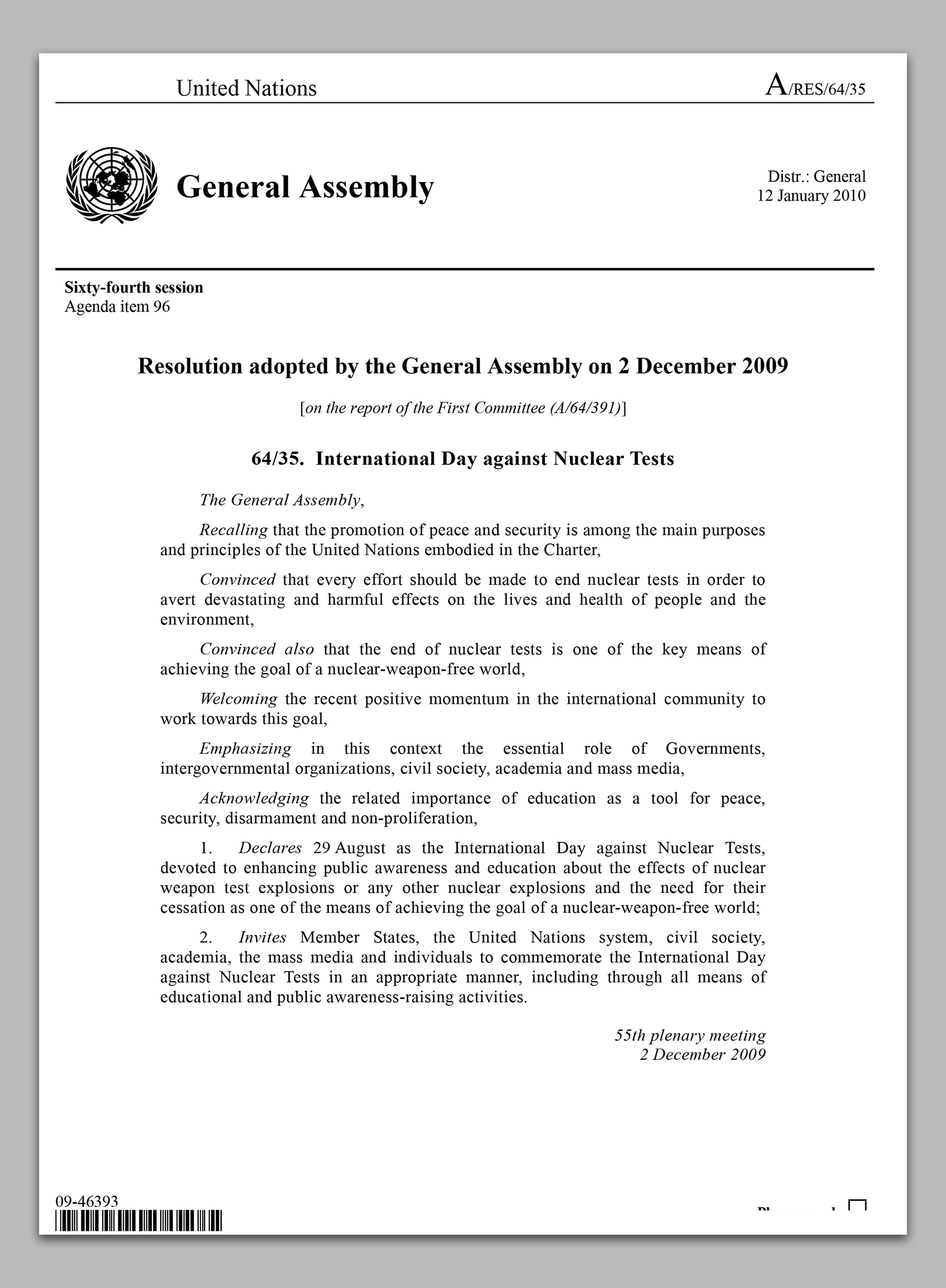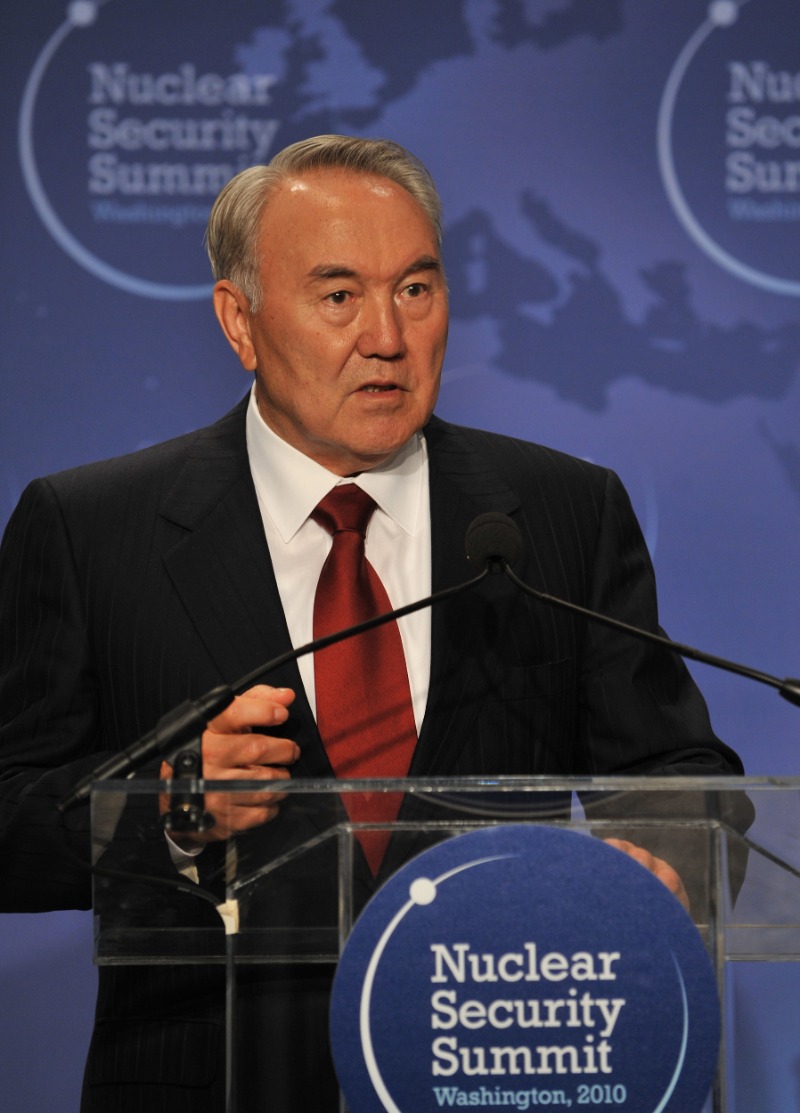Меню
Страницы
Статья
Online photo exhibition on the 30th anniversary of the closing of the Semipalatinsk nuclear test site
The Semipalatinsk nuclear test site was the first and one of the largest nuclear test sites of the USSR.
From August 29, 1949 to October 4, 1989 the Soviet Union conducted at least 456 aerial, above-ground and underground nuclear explosions and dozens of hydro-nuclear and hydro-dynamic tests. More than 1.5 million people suffered from the consequences of these explosions.
In 1989, demonstrations, protest marches and peace marches held in Kazakhstan, Russia, the United States, and Japan by the anti-nuclear movement "Nevada-Semipalatinsk," organized by the Kazakh writer and public figure Olzhas Suleimenov, resulted in more than a two-fold reduction of explosions planned for that year at the test site and the subsequent cessation of testings.
One of the most important milestones in the history of formation of the modern independent Kazakhstan was the decision of the first President Nursultan Nazarbayev made on August 29, 1991 to shut down the Semipalatinsk nuclear test site and voluntarily relinquish the powerful nuclear arsenal.
The date was commemorated by the global community through the UN General Assembly, which on December 2, 2009, adopted a resolution declaring August 29 the International Day against Nuclear Tests, calling for an end to the testing and use of nuclear weapons worldwide.
The strategic choice to pursue a nuclear-weapon-free future has demonstrated the priority of the security policy for Kazakhstan. It is based on supporting efforts to achieve a world free of nuclear weapons by 2045, a commitment to strengthening international security, developing cooperation between states, enhancing the role of international organizations in the resolution of global problems and conflicts, the principles and initiatives of sustainable development.
Participation of the First President of the Republic of Kazakhstan N.Nazarbayev at the Global Nuclear Security Summits
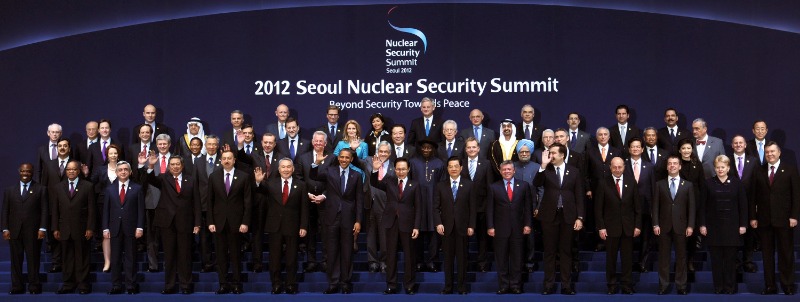
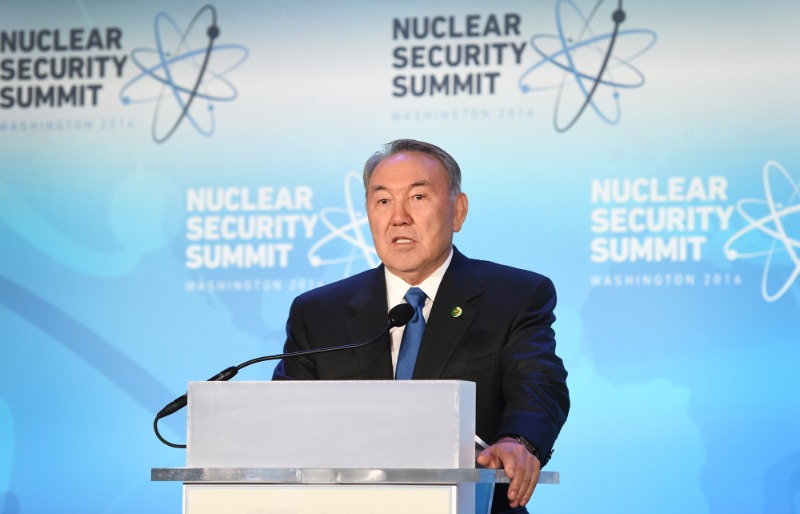
to the 20th anniversary of the cessation of tests at the Semipalatinsk nuclear test site. 18.06.2009, Semey, "Stronger than Death" monument.
